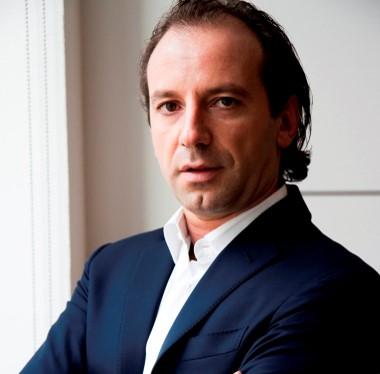
The individual customer has to be at the centre of the marketing strategy of every company who wants to succeed. Customer-centric marketing approach starts from the realization that there is no “average” customer. Customers have different behaviours and preferences – and this presents rich opportunities to move past a “one-size-fits-all” marketing approach. Customer-centric marketing teams think of their customer base as their greatest long-term investment.
Customer centricity approach means targeting the right customer through the right channel and sending the right message – at the right time. It also helps teams align around a strategy that will drive long-term value to the business: acquiring high-value customers, and keeping them coming back.
The consumption habits - of contents and products - have deeply changed in a competitive environment where the customers face an information overload.
The smartphone has become the primary reference when searching for information, comparing products, finding best deals, and connecting with a brand/organization. The smartphone has become the first screen, the reference for our daily activities.
“Mobile is the future” With these very words in 2010 Eric Schmidt, CEO of Google at the time and now Chairman of Alphabet, gave us a glimpse of what was going to happen. And he definitely hit the target!
As citizens and customers we live surrounded by dozens of different devices, and the screen of the smartphone has become the main reference for all our activities.
Mobile is not just another channel, it is a proxy of the customer, an entirely new lifestyle.
The awareness that the rhythm of our existence is marked by the mobile revolution is certified by three common stats:
15 - The minutes between when we wake up and when we turn on the smartphone.
150 - How many times we check, on average, the smartphone during the day.
177 - The minutes we spend, on average, every day looking at the screen of a mobile device.
Customers today do not go online … they live online. Better yet, they experience an endless sequence of moments, in a nonlinear balance between the online and offline worlds.
In the Retail business, one of the first industry that has been disrupted by the digital revolution, mobile devices enable different approaches to old problems. Shoppers want local info, and they want them quick: more than one-third are in a hurry searching for local businesses on their smartphone.
Your customers are ready to buy. They are ready to buy from you. They are just asking for one simple thing:that they canreceive relevant information on their smartphone when it is the right time.
According to a Google research on “micro-moments” to offer memorable experiences to customers, a retail brand must develop and cultivate three qualities:
“Be There” - The ability to show up when and where the customer has a need or desire.
“Be Useful” - The ability to be there with relevant content, and to become a primary reference.
“Be Quick” - The ability to think and act fast. The speed is essential across all stages of the customer journey.
In his core essence, the brand new customer is driven by technology.
The supershoppers are tech-savvy, and you cannot even remotely think to engage and monetize them as you did with the clients of the past decades. If you do not speak their language, you will never capture their attention, and ultimately you will lose all relevance.
What does it mean for retailers to be, or become, relevant in the age of mobile? Easy, they need to rethink how they plan their marketing strategy, how they connect with customers (online and in-store), how they convey their contents and values.
In a few words, you must use technology to establish your brand as a trustful source of information and inspiration. And you must do it not once and for all, but improving day after day after day.
Study and understand the supershopper; be present in the micro moments that matter; stay relevant and be epic. Only then you will conquer their heart and mind.
Shopping in the era of micro moments often starts when people have a need or desire to purchase a product. Once they feel this need, they start looking for ideas, a search that will lead them to online communities, social networks, video tutorials, company blogs. Only then they will evaluate the different options and eventually decide what (and where) to buy.
In these moments you have to be there and be useful, to win their trust and loyalty.
“Be there” means that you must “identify the most important micro moments and commit to being there, whenever and wherever a shopper is searching, especially on mobile.”
“Be useful” means that you must provide valuable contents when your customers need them, on any channel (social media, point of sale, advertising, blog, social commerce).
“Be Quick” means that you must provide the required and valuable information at the right time and in the right manner.
This tremendous impact on the traditional way to run business has already touched other industries.
For travel agents, the rise of digital has severely disrupted the industry.
“Traditional travel distribution in which high street travel agencies played a dominant role was revolutionised with online travel agencies and direct distribution through airlines and hotels’ websites acquiring a key role”, explains Angelo Rossini, contributing analyst at Euromonitor International.
While the internet killed off many high street travel agents, others have been forced to adapt to a very changing marketplace, with many embracing the internet by introducing online bookings.
“As part of our omnichannel strategy, Thomas Cook has seen the need to make sure our customers can be served in a seamless way through whatever channel they wish – online through mobile, tablet, desktop or offline in a store or over the phone”, says its group head of digital operations, Graham Cook. The company has stepped up its digital innovation of late, even introducing virtual reality experiences across select stores.
“The digital revolution has impacted almost everything in the world as we know it”, says James McClure, country manager for UK and Ireland at Airbnb. “In Airbnb’s case, technology has also brought tradition into the mainstream. The concept of staying in people’s homes when travelling is not a new one and dates back many centuries, but what technology has been able do is accelerate this to a fast-moving and easily-accessible global phenomenon”.
For travel brands it means they have had to get smarter and adapt as consumers expectations rise
So how will technology shape the future of travel? “The next few years will see travellers requiring an increasingly personalised service, with companies able to suggest customised products on the basis of their profiles and past behaviour”,says Rossini.
Has the moment come for an old style industry like insurance to turn the page? Several experts, managers, entrepreneurs, investors engaged in the insurance space consider that 2017 will be the year of InsurTech … some strongly believe that “every successful insurance company will be InsurTech” soon!
In fact, the deep disruption that touched the Tourism and Retail industry seems to have many points in common with a potential evolution of the Insurance industry nowadays. An intelligent usage of the technology in this industry can generate new opportunities to close to protection gap, reduce the anti-selection issue, optimize loss ratio with personalized proposals and reduce overall processing cost. All this in a more and more customer centric approach.
Internet of Things and Artificial Intelligence are undoubtedly two main drivers for the evolution of the industry and we have seen several interesting applications already on the market. A lot of InsurTech star-ups are investing all around the world in these technologies which enable insurance carriers to propose innovative and customized coverage to their customers while “blue ocean” opportunities are appearing.
Traditionally, the insurance industry business model is focused on:
- Identifying the pool of customers that might be risk-assessed;
- Targeting those customers and assessing the risk for each class;
- Selling differently priced policies and spreading the risks over the pool of customers;
- Try to retain those customers as long as possible offering lower price for longer contracts.
This approach is by definition based on the concept of “standardization” – the opposite of “customized” from a marketing point of view – and even if it was one of the gold rules of the insurance business for several decades, it has become obsolete nowadays.
The insurance industry has always been rich of data but – traditionally –they are quite unstructured or, at least, the models used are quite old and simple.
Being connected has become the talk of the town, and insurance companies are surely one of the main interested parties in this discussion, some of them being actual promoters of change and innovation.
Consumers are becoming more and more connected whether it is at home, at work, behind the wheel, when they engage in sports and leisure activities, and so on.
The surrounding environment is becoming smart and is being incorporated in the connected ecosystem, thus creating new opportunities for insurance companies, opportunities which must be managed appropriately in order to maximize value. Here big data analytics play a huge role, as the quantity of collected data & variables is getting higher and higher.
The IoT real-time data collection and sharing power will create significant new opportunities in finer product segmentation, more specialized pools of risk and predictive modelling to better assess risk, improve loss control and accelerate premium growth.
The Internet of Things is the network or system of interrelated computing devices and sensors and can communicate with other devices on the network. These objects, or “things,” are capable of transmitting data.
In the end, in order for insurance carriers to harness the power of the IoT, each will have to first think creatively about what data to gather and how to use it.
A system based on IoT and big data analytics that can identify patterns and provide optimized solutions based on real-time input; up-front: a seamless user-friendly interface that will transform the way companies communicate with policy holders.
The IoT’s impact within insurance is coming fully into focus. At the highest level, better use of IoT and sensor data means insurers have the opportunity to:
- Establish direct, unmediated customer relationships
- Gain more granular and precise understanding of who their customers are and how their needs change over time
- Individualize offerings of products and features
Within IoT applications, Artificial Intelligence is also helping (or disrupting, depending on how you see the matter) the sector in different ways.
The abundance of data can be used indeed to refine customer segmentation and provide personalized offers based on personal features.
Artificial Intelligence offers predictive recommendations that are backed by complex algorithms and data, and have the ability to analyse process flows for bottlenecks, improving overall company and customer satisfaction. Algorithms compare answers and information provided by customers to make appropriate recommendations for each risk scenario.
It’s constantly at work to better understand humans and their thought processes through machine learning, which allows AI to analyse human behaviour and provide predictive consulting based on each individual’s wants and needs.
So, It can help increase the customer engagement and retention with personalized offers delivered at the right time, in the right way at the right price.
---
This article has been written by Andrea Silvello and Dario Melpignano, co-founders and CEOs of Neosurance, the Virtual Insurance Agent. Andrea Silvello is an Insurtech entrepreneur, strategy & innovation consultant. Dario Melpignano is founder and CEO of Neosperience, recognized expert in Digital Customer Experience.


